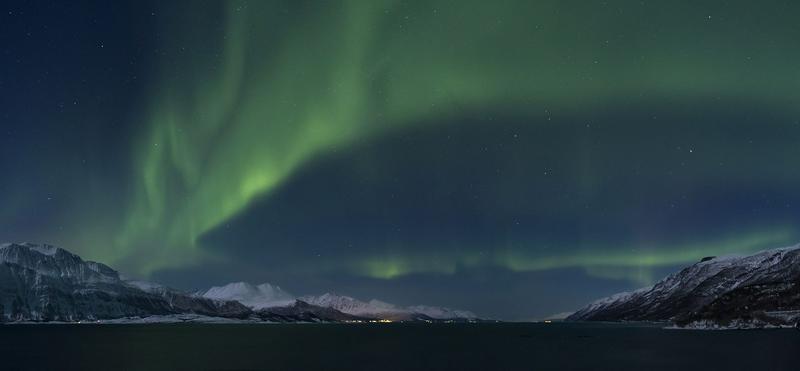Exploring the Northern Lights
By | May 3, 2019

One of the most captivating sights in nature, the auroras have fascinated mankind for centuries. Long before physicists learned to explain them, the northern lights have been the subject not only of philosophy and science, but also of mysticism and folklore, inspiring mythological creatures, superstitions, and religious traditions.
Cro-Magnon rock paintings dated back as far as 30,000 years ago have been found in the caves of Southern France and are believed to represent the auroras. The oldest written documentation of an auroral sighting occurred in China around 2600 B.C. in the tale of Fu-Pao which describes the auroras as “strong lightning” and implies that they were associated with Fu-Pao becoming pregnant. Other observations occurred in China after 687 B.C. with the lights being described as having the characteristics of fire and animals, particularly dragons.

In 593 B.C., the lights were again spotted “on the 5th day of the 4th month.” Greek philosopher Anaximenes wrote about “the accumulation of moving and burning clouds,” which many believe to have been a description of the auroras. Around that time, Hippocrates and Aeschylus theorized that the lights were a reflection of the sun; however, Aristotle had another theory. He believed that they were the result of steam rising from the ground and igniting in the sky. Plutarch described the northern lights in 467 B.C., but his words are believed to have been a quotation from the lost writings of Anaxagoras. In this quotation, the lights are described as a flaming cloud. It is estimated that the lights occurred one to three times per decade in ancient Greece.

There are also several mentions of the auroras in the Old Testament. According to the first chapter of Ezekiel, King Philip of Macedonia attacked the city of Byzantium by having his soldiers digs tunnels under the city’s walls. Despite it being the middle of the night, the land was lit by a bright crescent-shaped light, which exposed the troops and saved the city. Afterward, a coin bearing a crescent-shaped figure which still appears on many flags was created to commemorate the event. The figure is often mistaken for the moon but is actually believed to be an auroral arc. The northern lights were also spotted in Rome, with the earliest sighting occurring around 460 B.C. They were also allegedly seen in 44 B.C. on the night before the assassination of Julius Caesar. However, after the fall of the Roman Empire, the auroras seemed to almost disappear from history for nearly one thousand years.

The sightings that were documented seemed superstitious and often contained predictions of war. A sighting on March 3, 451, was linked to the defeat of Atilla at Chalons-Sur Marne. Several sightings between 500 and 1100 were recorded in the Chronicle of Scotland, which includes descriptions of the auroras from the writings of the Vikings. In Norway, the lights were described as “the sky bridge between the gods and earth,” which was also known as the “Bifrost.” The Norse god, Heimdall, was the watchman of the bridge and, therefore, the god of the Northern Lights.
However, there were attempts at scientific explanations for the lights. During the 1200s, an unknown author described the lights as a natural phenomenon he called Nordurljos in a Norwegian work entitled “Kongespeilet.” However, it was not until 1619, that the lights were given the name “aurora borealis” by Galileo, who named them for the Roman goddess of morning. Like Hippocrates and Aeschylus, he believed the lights to be a reflection of the sun. It was Sir Edmund Halley who first attributed the auroras to Earth’s magnetic field.

In 1790, British physicist Henry Cavendish used triangulation to determine the altitude of the auroras. From 1866-67, Ångström proved the lights were caused by gas emission. Norwegian physicist Kristian Birkeland and Carl Störmer in 1903, concluded the auroras to be a system of electric currents flowing through the gas of the upper atmosphere. These currents, which came to be called Birkeland Currents, are parallel to the magnetic field. By the 1970s, satellites were able to measure these currents.
Despite the advancements in understanding the auroras during the 20th century, superstitions still linger. Tales from Alaska, Canada, and Greenland say that the northern lights are spirit ancestors guiding hunters to the prey. In Norway, children wave white clothes, “fanning” the lights to increase their brilliance. And in Scandinavia, the auroras are linked to the death of women, particularly virgins.

